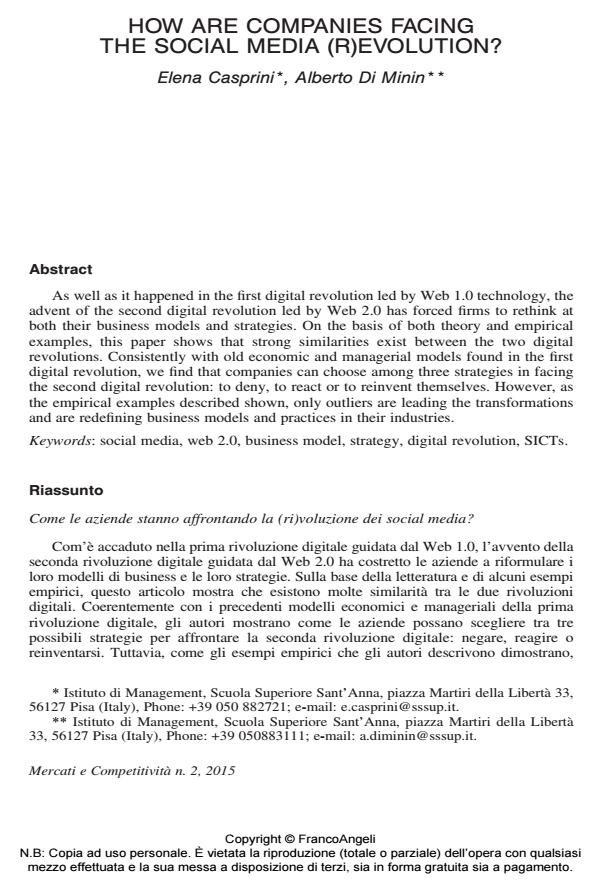How are companies facing the social media (r)evolution?
Journal title MERCATI & COMPETITIVITÀ
Author/s Elena Casprini, Alberto Di Minin
Publishing Year 2015 Issue 2015/2
Language English Pages 20 P. 67-86 File size 696 KB
DOI 10.3280/MC2015-002005
DOI is like a bar code for intellectual property: to have more infomation
click here
Below, you can see the article first page
If you want to buy this article in PDF format, you can do it, following the instructions to buy download credits

FrancoAngeli is member of Publishers International Linking Association, Inc (PILA), a not-for-profit association which run the CrossRef service enabling links to and from online scholarly content.
As well as it happened in the first digital revolution led by Web 1.0 technology, the advent of the second digital revolution led by Web 2.0 has forced firms to rethink at both their business models and strategies. On the basis of both theory and empirical examples, this paper shows that strong similarities exist between the two digital revolutions. Consistently with old economic and managerial models found in the first digital revolution, we find that companies can choose among three strategies in facing the second digital revolution: to deny, to react or to reinvent themselves. However, as the empirical examples described shown, only outliers are leading the transformations and are redefining business models and practices in their industries.
Keywords: Social media, web 2.0, business model, strategy, digital revolution, SICTs
- How do companies organize nascent markets? The BlaBlaCar case in the inter-city shared mobility market Elena Casprini, Alberto Di Minin, Andrea Paraboschi, in Technological Forecasting and Social Change /2019 pp.270
DOI: 10.1016/j.techfore.2018.01.012 - Business Model Innovation in Software Product Industry Kul Bhushan C. Saxena, Swanand J. Deodhar, Mikko Ruohonen, pp.35 (ISBN:978-81-322-3650-4)
- Exploring the palm oil crisis through the lens of different social media: an analysis of facebook, youtube and twitter contents Matteo Corciolani, Giacomo Gistri, Stefano Pace, in MERCATI & COMPETITIVITÀ 4/2016 pp.43
DOI: 10.3280/MC2016-004004
Elena Casprini, Alberto Di Minin, How are companies facing the social media (r)evolution? in "MERCATI & COMPETITIVITÀ" 2/2015, pp 67-86, DOI: 10.3280/MC2015-002005